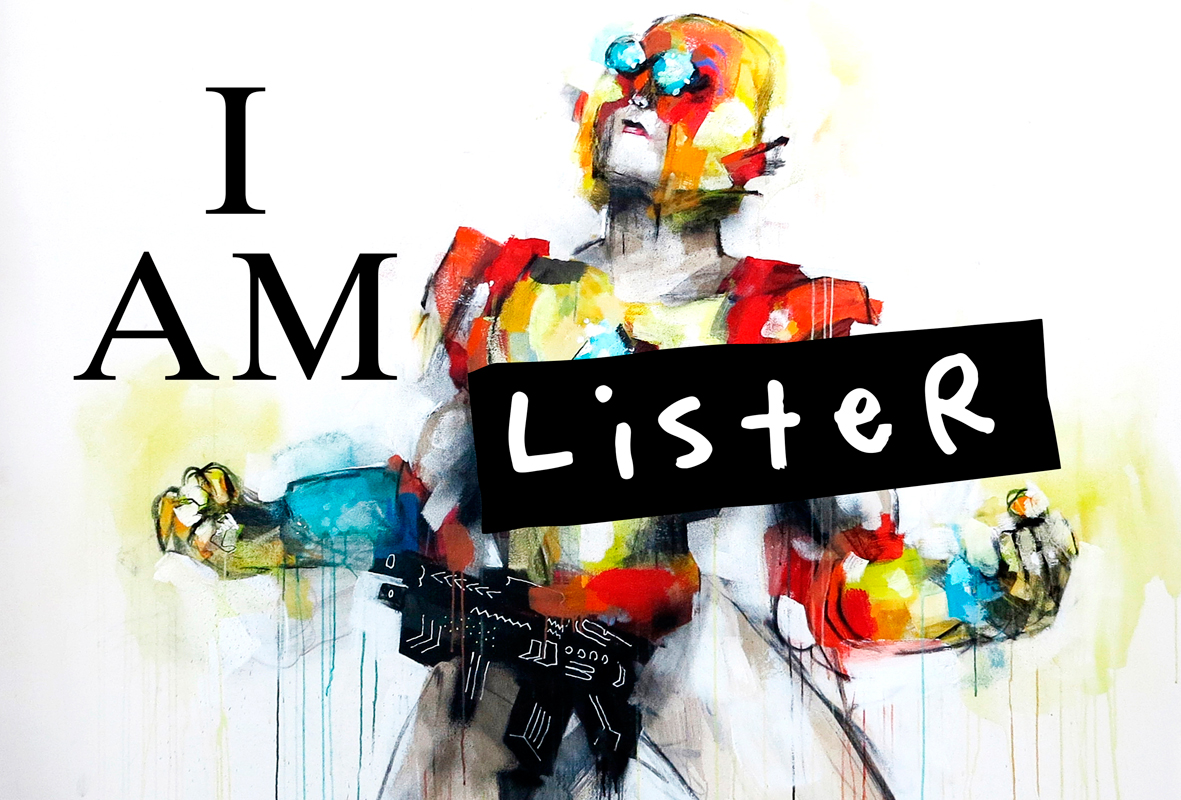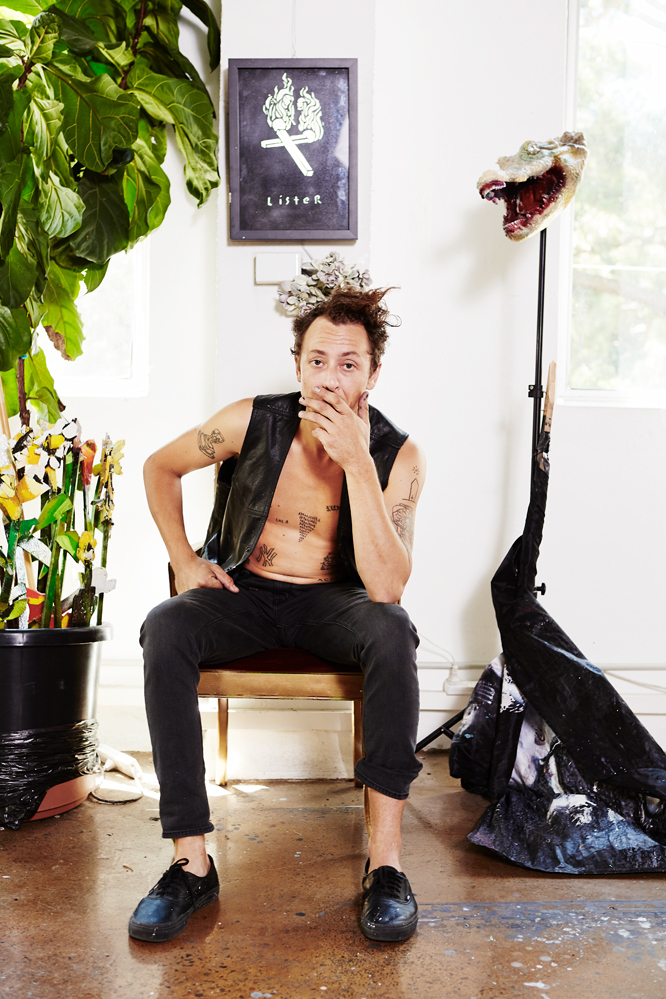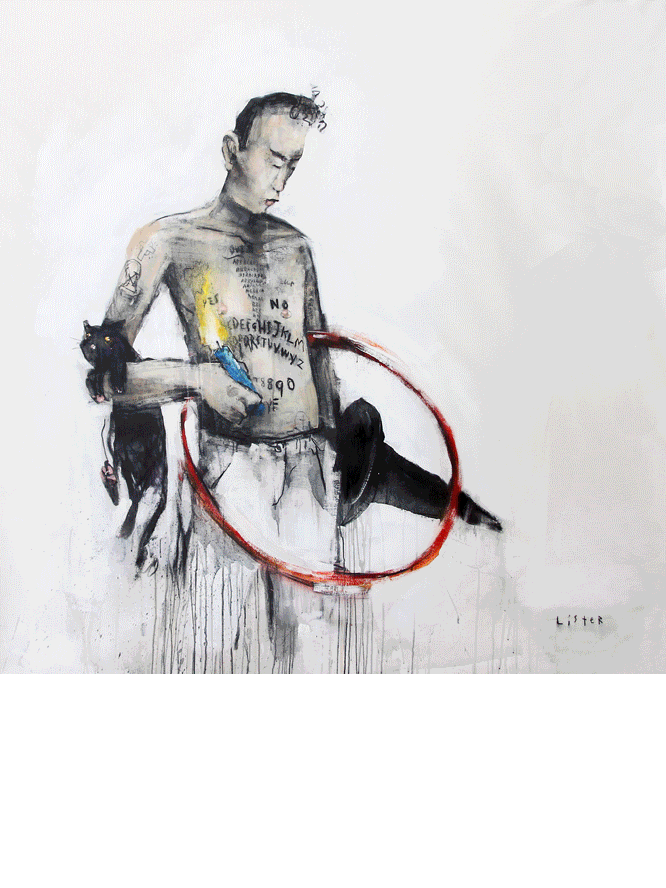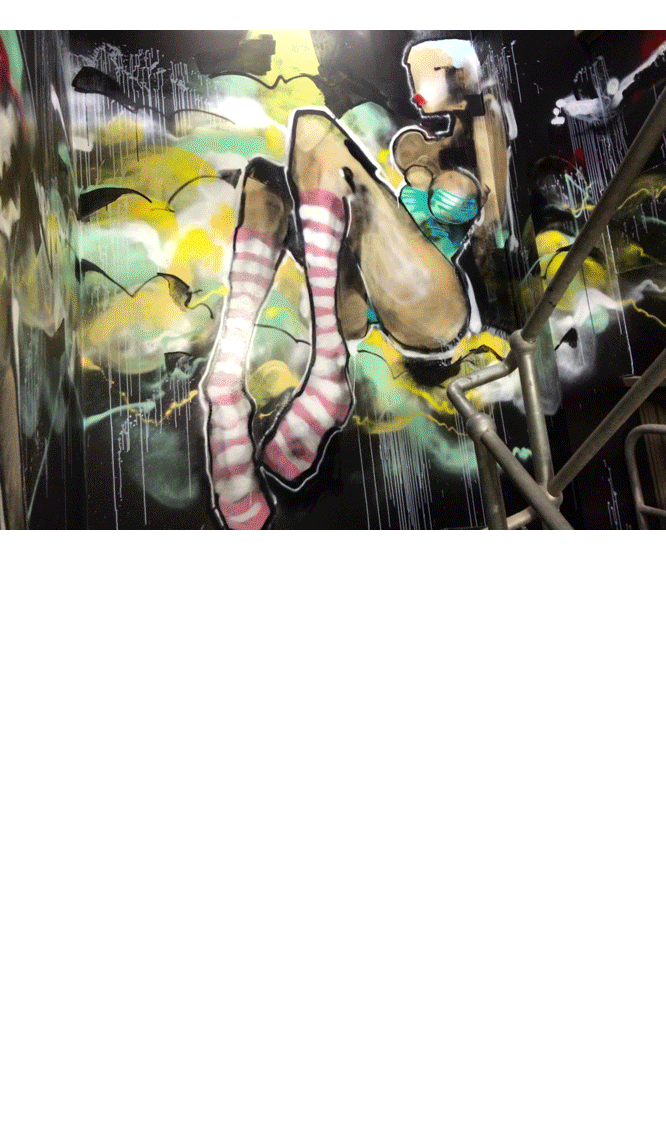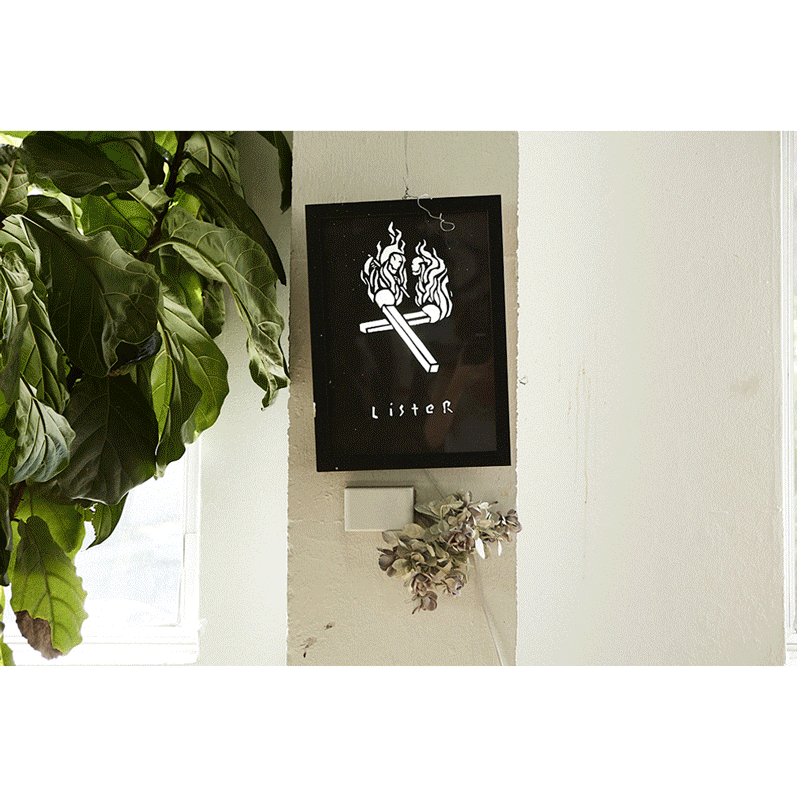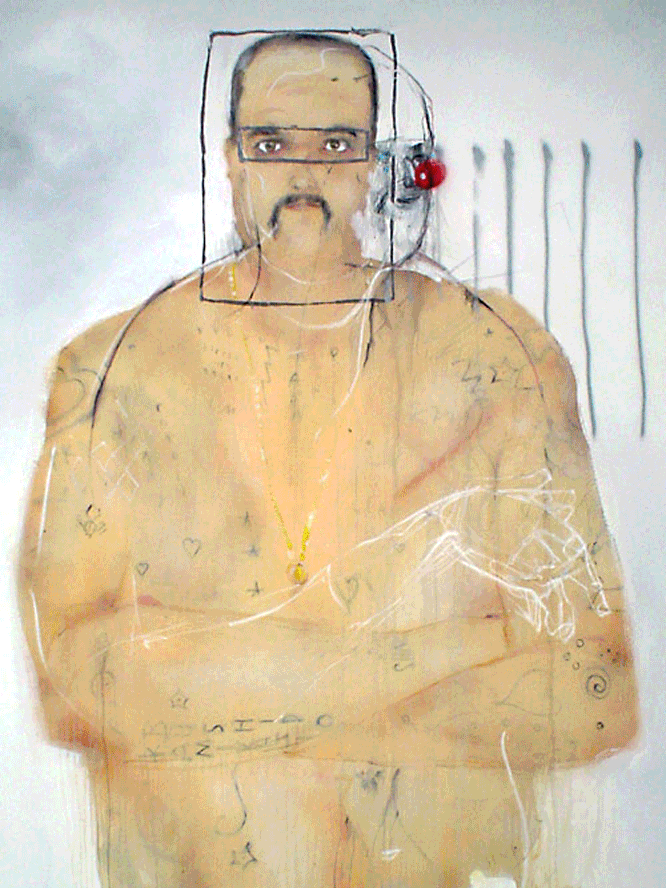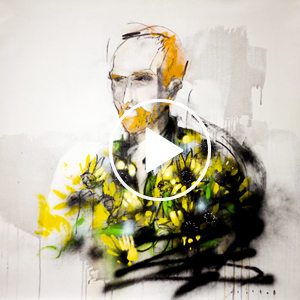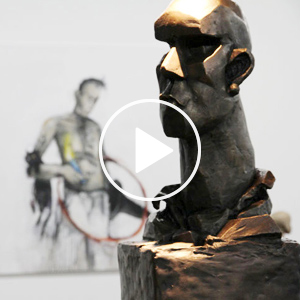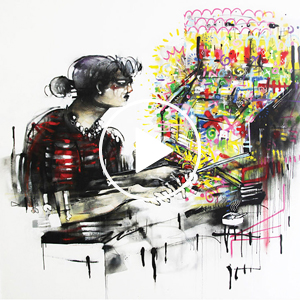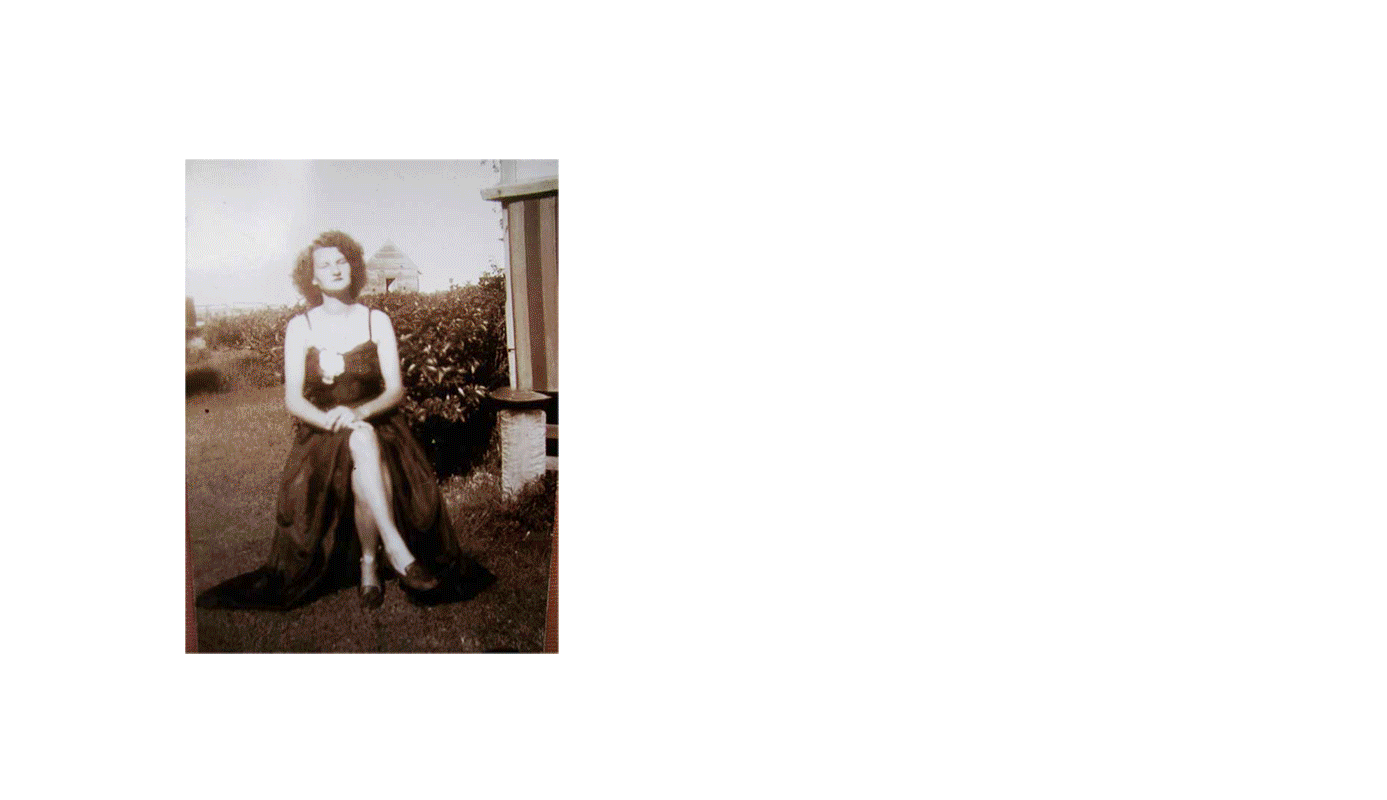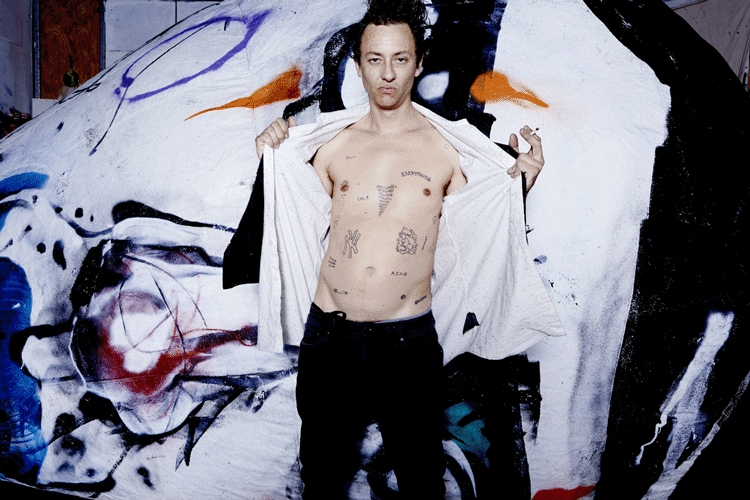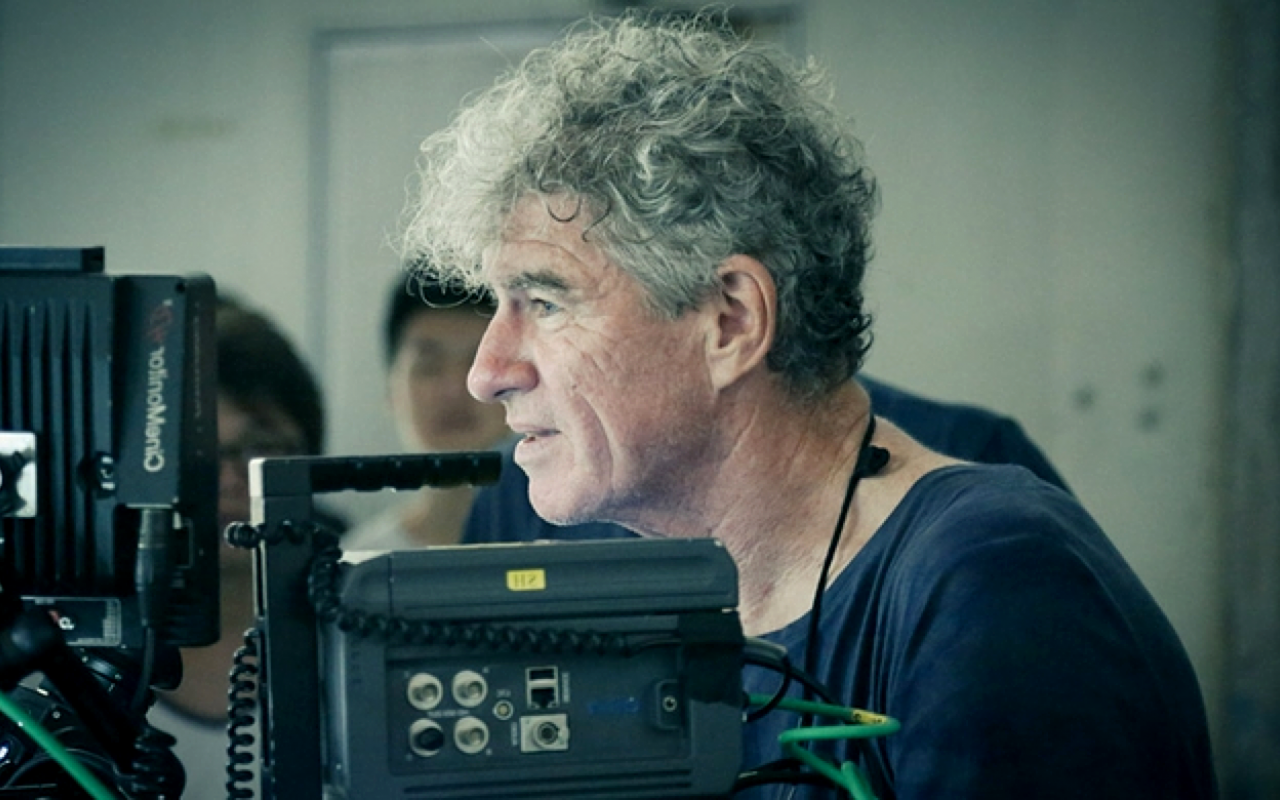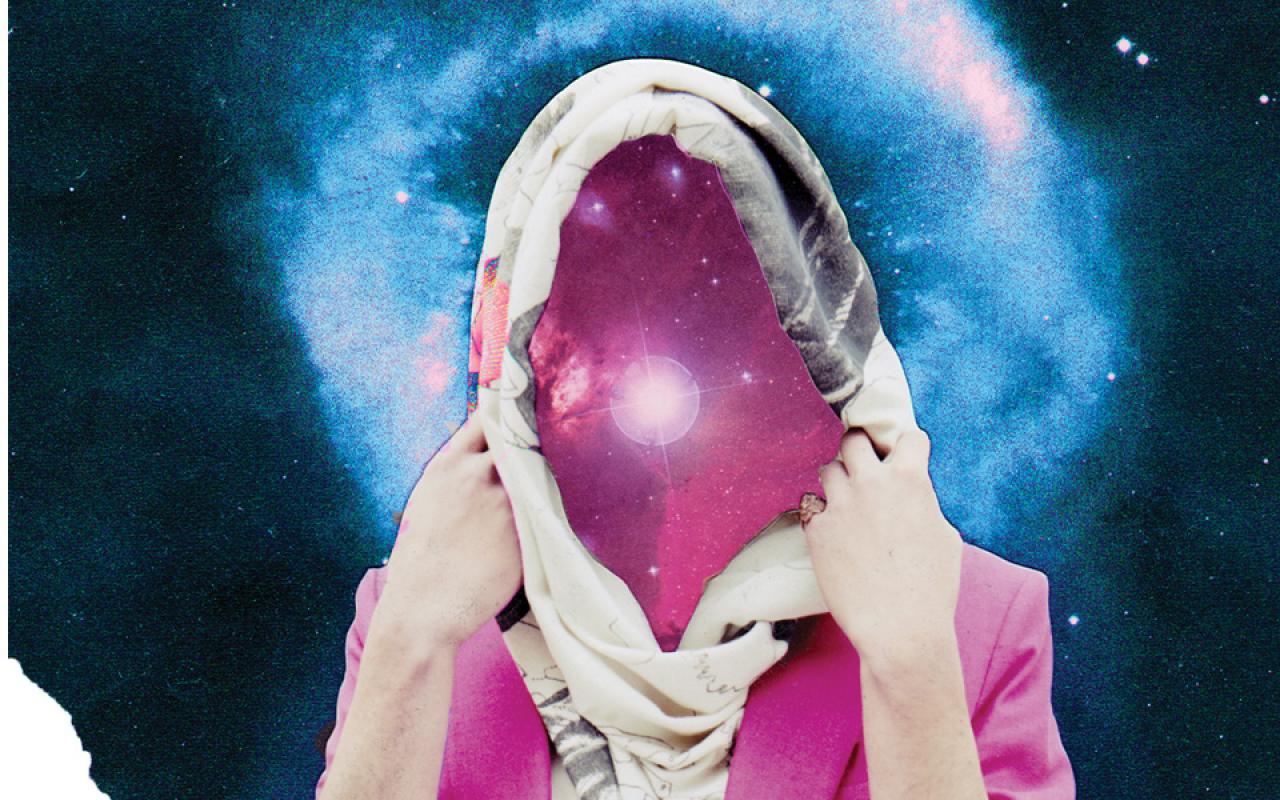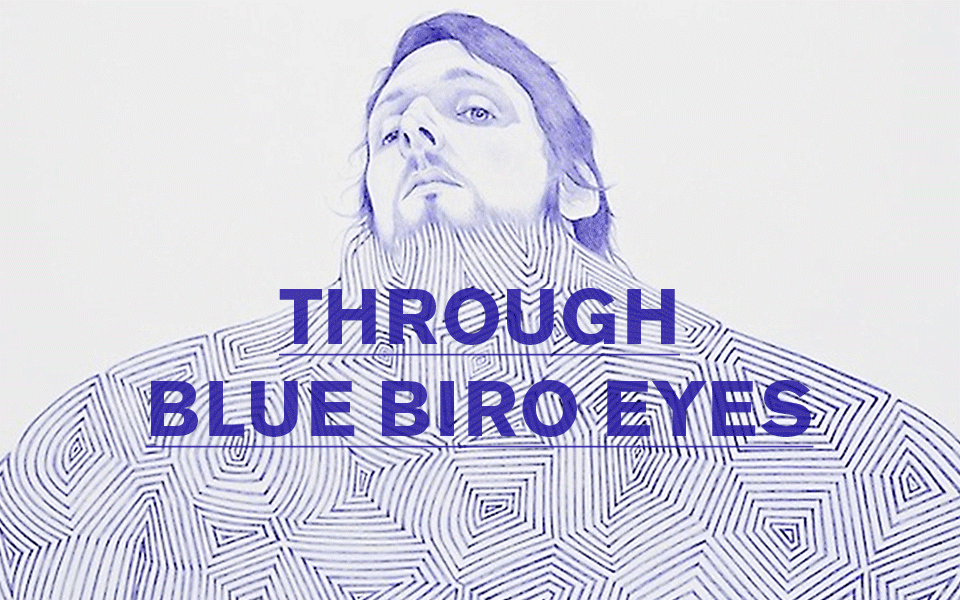profile \ 04
Anthony Lister
Artist \ Street Artist
ANTHONY LISTER - THE NAME ON EVERYBODY'S FENCE
A well-known name and long-conspicuous presence on Australian inner city streets; Anthony Lister has made a fast mark as one of the country's most infamous and the world's most well known street artists, while simultaneously being cited as one of Australia’s most collectable and widely discussed contemporary artists.
Using ‘Lister’ as his street signature and ‘Anthony Lister’ for his gallery work, shows there to be a mental shift and a line between the work Anthony produces. Yet anything he creates is instantly recognisable and distinctly his own, despite the medium or materials he uses, the time constraints he operates under, or just how legal it is.
Anthony is often associated with, or has been pigeonholed as; a part of the "low-brow" art movement. A modern art movement which started in Los Angeles in the late 1970s. It began with a collective of artists forming an underground movement loosely defined as: "pop surrealism" which often centered on characters from comic books and pop culture as its subject matter. With Lister's heavy use of Superheroes and pop culture icons as his subject matter it is easy to see why the presumption is made, but one thing Anthony Lister prides himself on is dancing in between the rigid definitions of art - or to use his own words: to sit atop a "pyramid fence" in between it all.
Anthony’s fluid shift between street art and fine art is as indicative of a cultural generation as it is of the man himself. The 1980s were the breeding ground for graffiti and street art infiltrating "high art" and its mentality and aesthetic found a lucrative place in galleries and on collectors' walls ever since. Through the recognition of New York street artists such as Keith Haring and Basquiat and later Shepard Fairey and Banksy amongst others; contemporary 'street artists' like Lister have become recognised, elevated, collectible, and commanding high prices in the art market.
"Everyone thinks they want to play until they get punched in the face, and that they love street art until it’s their fence that gets painted or tagged."
Meeting Anthony you can feel the internal restlessness of an artist that is constantly affected by and reacting to the world around him. His work can seem like an emotional response, a little fast and furious, with the occasional, sneaking feeling of being given the middle finger, yet underlying themes can appear to come from a sensitive reflection of his subjects and a thoughtful reaction to surrounding culture. His methods and practice can at times seem unfinished and hurried, but it is exactly this that makes his work seem so personal and clever.
One of Anthony’s recurring traits is just how much intonation and mood his characters can convey, even within his most minimalist work. His street art is a great example of this: many painted quickly and illegally on public walls with a long-reach roller for a brush. Quite a feat for any artist attempting to evoke mood or story, especially on such a large scale.
His fine arts degree, mentorship with renowned New Zealand artist Max Gimblett and the inspirations he points to, have given Lister a strong foundation to produce work that comes directly from him, with confidence, conviction and even a little disregard. He cites Brett Whitely: "The great party artist" - as his true inspiration and Michelangelo as his historical reference for human nature leaning toward public displays of art. We had to ask why he believed Michelangelo was the first true street artist, he told us this:
“Michelangelo wheeled his sculpture David on rolling logs into the public square in Florence, one evening with his friends. He then left it in the street, chiseling his name into the sculpture before he left. Pure street art."
"Our urban mythology is now translated through comic books and television sitcoms -
and the distinction between good and bad plagues our existence in every way, yet remains ambiguous in its representation."
It is easy to see why Lister is commonly touted as Australia’s own Banksy, possibly only due to not many well-known artists have been used as poster boys by the law and advocates against street art, so publicly, as much as Lister has. Anthony has been jailed in New York City under the Giuliani council and found guilty of willful damage on a graffiti charge, over his paintings on four sites around Brisbane. Ironically he was tried by the same city council in Brisbane that encouraged and financed his first paid street art commission not so many years earlier. The $10,000 paid by Brisbane City Council for his street art funded his original trip to New York City; which in turn saw him both prosper as an artist, as well as be arrested and jailed for offenses connected to his street art.
Over the course of his career Lister has traveled the world painting walls, both legally and illegally, and making his mark on pretty much anything he can get his hands on. Transforming bus shelter advertisements into pieces of art seems to be a personal favourite of Anthony’s and entering his studio you quickly realise nothing much around him goes untouched: the fridge, walls, fire blanket, computer and lamps, all bear some mark of Lister on them.
Walking with Anthony to view a mural he did around the corner from his former Sydney studio, we passed a dirty old mattress left up against a tree in front of the government commission housing, and even that was too much of a blank canvas for Anthony - he pulled out a black marker from his pocket and scribbled large down the middle of the mattress: "Nothing really mattress’s. Piss Stain - Lister."
Anthony developed a long-term relationship with notorious Australian gang member and convicted criminal Chopper Read. Anthony first met Chopper when he asked if he could paint his portrait, for the Archibald Prize in 2006. Lister and Chopper became friends and stayed steady pen pals up until Choppers death in 2013. Lister says of his friendship with Chopper: “I’m attracted to scoundrels and larrikins and the undercurrent of society. I guess I’m interested in how people weave around the system.” Lister's Exhibitions such as: Bogan Paradise, Hurt People, The Beautiful Misery, The Underbelly, and Memories Not Included, you can't help but get a sense of Lister’s personal story and perspective throughout all of the work he creates and is what makes it feel so original. His work is usually fun to look at and wild in form and nature, but there is a depth behind the spray paint and a lot of sharp wit within the scrawled handwriting.
Lister’s original style and prolific amount of work, both inside and outside of the gallery, has seen him exhibit consistently over the past ten years, both solo and collective. Along with an ever growing list of international exhibitions, he has been awarded commissions from high-end labels such as Hermes and received editorial coverage and collaborations from the likes of Vogue; all while simultaneously and consistently being tried in a court of law for willful damage or other charges, shows just how divided and fractured perceptions are of both him and his art, inside and outside of the gallery.
By whatever definition or opinion: vandal or contemporary artist, it is hard not to acknowledge the widening spread of his work and the burgeoning presence of his well-advertised name. If nothing else, Lister's art speaks for itself, at times quite loudly, from all corners of Australia’s major cities and from walls, buildings and bus stops the world over. Or wherever he has physically walked past with a pen or some paint really.
Video \ Exhibitions
IN HIS OWN WORDS
How did I start... well, it was natural for me to scratch into things and mark things, or even just use my hands. I used my hands a lot and that’s pretty much how I started at it.
I guess I was directed towards the visual arts through my Nanna, who was a painter. She encouraged me to keep my hands busy by drawing. She actually did that painting of Will Smith over there [points to a painting on his bedroom wall of the actor, Will Smith.] She painted that at the age of 85. I asked her; I said, “Nanna, do you know who this is?” She said, “Well, it's a very attractive young man.” She had no idea who Will Smith was. She just cut him out from the newspaper - and had done that her whole life."
Everyone draws in the beginning. I guess when I was six or seven years old, I identified myself as a drawer and that was pretty much my identity throughout school. It was a hobby and just something that I have always been engaged with; an interest of mine and something that just developed from there really.
When I was younger I wasn’t conscious of my environment being a product of myself or me being a product of my environment, I kind of just existed. I grew up in Queensland, Brisbane town. People all around me just paid the bills and worked all the time. I didn’t consider myself having any power, or having any say, or having any influence or being influenced by anything in particular within those years.
I had a lot of friends who took graffiti very seriously and they would always encourage me and I always considered it a waste of materials. It was again actually through my Nanna that I was encouraged towards street art.
I was 19, just starting university at the Queensland College of Arts in Brisbane, and I was starting to get off the rails a bit and my Nanna came across an incentive by the Brisbane City Council to encourage street art, did I really begin taking it all a bit more seriously, I guess.
It was around that time that I actually started to develop some traction as a painter in the public eye and started gaining some attention for my work. I would draw on things at the skate park, but I wasn’t the guy who would take down paint and take it seriously. I was the guy who skateboarded and would use a pen if I was going to draw anything. They would say, “Hey man, that's cool, why don't you come out (and graffiti) with us” but I would say; "Nah, I'm happy just doing my thing."
It’s important to me that I acknowledge, honour and value the traditional sense of each practice and I’m aware that some people see me as a threat or something, mostly, I think, due to the fact that I don’t fit into one clear category. In a lot of ways, my approach may seem hybrid and a mutation of sorts, but it’s not from a lack of education or lack of respect for these practices.
I believe graffiti and street art are different things and it can be a very simple thing to break down. Graffiti is letters and words and street art is pictures. I know that’s a bit basic and silly, but that’s the essence of it. When I’m explaining it to people especially to graffiti artists, I say; "Pictures are just shapes that haven’t become letters yet and letters are shapes that haven’t become pictures yet, and that’s where you get to use your imagination," and I think it helps people to break down those barriers.
I do exist in a paradox between the fine art world, the street art world and the graffiti art world and I sit on this kind of pyramid fence where they think I’m all about that world or this world and really it doesn’t matter to me. I make what I make, I don’t try and pigeonhole myself, even though those words are used.
There are many facets of every art world but to look at it in essence, in my mind, there’s outdoor work and there’s indoor work. With indoor work you have the time to take it seriously; to consider and consult it. Whereas outdoor work there isn’t necessarily the time to consult it.
When you're building a style that ebbs and flows between each practice, it's either be very quick, or take all the time you need. And to find anywhere in the middle - well, I won't lie - it has been exhausting to pursue this craft. I’d hate to use the word "career" for this beautiful thing I’m involved in.
All artists/street artists seem to start off as one thing and then evolve into another. And then they usually destroy themselves by that stage - either because they can’t keep up or they’ve lost interest. I believe it’s through that burning phase where you can really and actually develop the Zen period, that’s when you transcend.
Whether you succeed or not you will always do it forever. It can be seen as a disease, the graffiti disease or something, but if your intention is pure I would like to think that you are just born to do something in the public space.
It wasn’t until I got older and had children myself that I realised I should have been more conscious. Or I would have liked to have felt that there was some consciousness inside of me: to question whether or not I was a part of something or not, or if there were others like me. But it just simply wasn't there. That's when I feel I took on the freedom of visual speech and what I guess I see as the fight against the imperial forces.
It was probably around when I was 26-27 years old when I started taking it all a bit more seriously. I had two children and I had moved with my family to New York. In Brisbane, where I grew up, I was a celebrated public artist, I’d graduated with a fine arts degree and I was encouraged to do street art and paint pictures. It wasn’t until I was arrested in New York for doing what I had been encouraged to do in my hometown, and then after returning to my hometown doing what I had originally been encouraged to do, that I realised that the generation of people in power encouraging street art were no longer in power and that it had all changed.
I was a tool that was built under the guidance of forward-thinking politicians and then all of a sudden I was facing an entirely different organisation. That’s when I realised there was an injustice going on. Not an injustice against me personally, but an injustice against the fundamentals of public life and the freedom of being a visual practitioner within society.
The arrest in New York and all these other goings-on shook my conviction, only because it made me question whether my intentions were pure and if my actions were just. It was only after a deep consulting - of myself and my intentions - that I realised that I was in check. I was never wanting to do anyone any harm and it wasn’t about ego. I checked myself about all the areas to do with making artwork in public, and I was right in myself. So I just went forward and hired really good lawyers.
Here I am on the other side of what would be, in anyone else’s circumstances, a prison sentence and I’m free. And not only that, but I feel that in some way I’ve shaken the box on this dormant, unquestioned, authoritarian bullying of creatives and I hope it does some good. Either way, it’s not a fight for me, but it does give my work more drive - to feel like your fighting for the freedom of visual expression.


